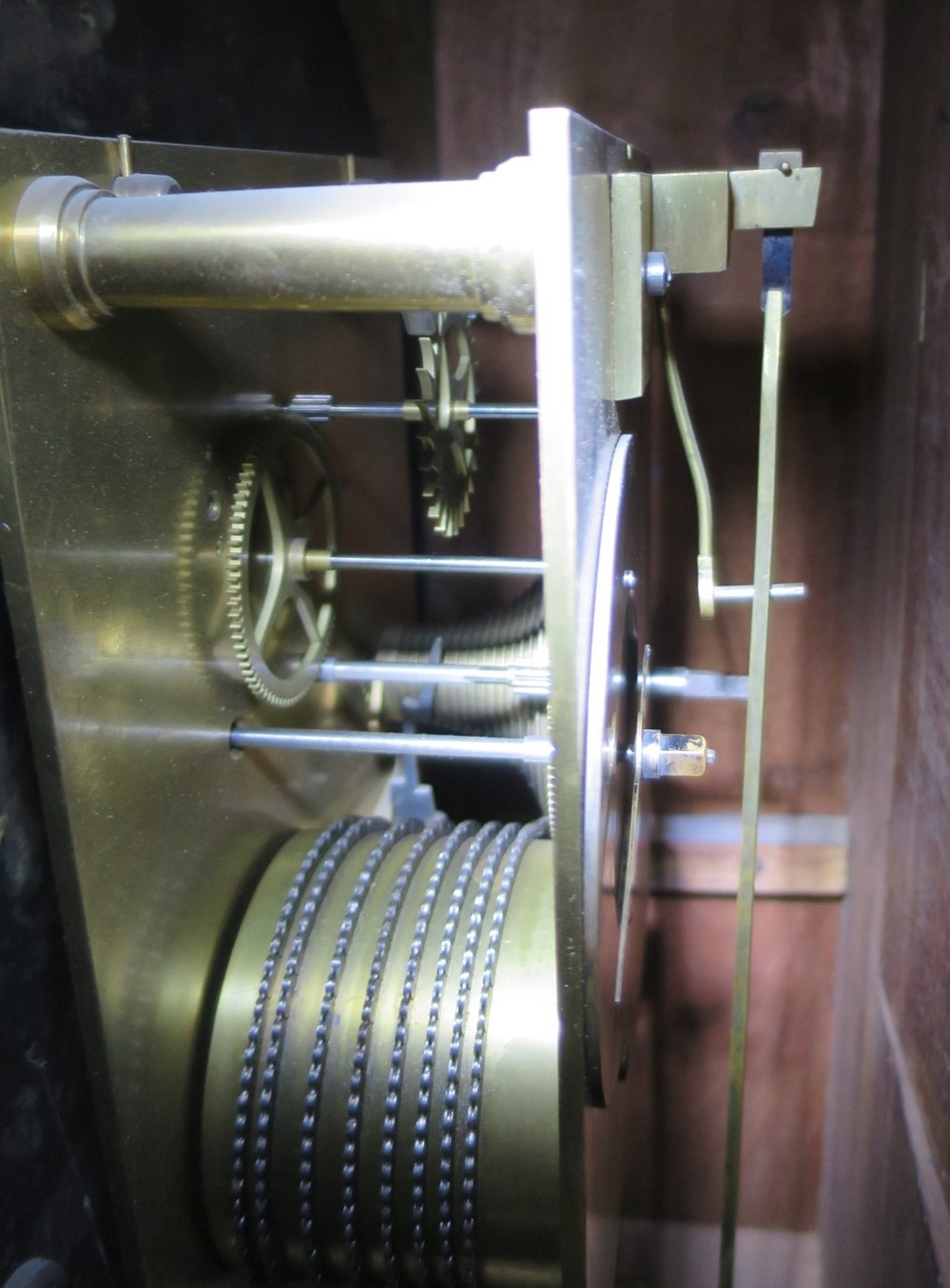Scott on the Castlemaine Brewery Clock
It was a fortunate day that Horologist Brian Scott visited CAM and Buda and left us his business card and a request to examine two clocks in the museum. So delighted were we, that we invited Brian to write a Reflection. Brian writes on a magnificent utilitarian clock which has for many years been located towards the back of the museum. Do any of our readers remember this clock in situ, in either of its previous esteemed locations?

This clock tells much more than the time.
It was bought from Earnest Leviny’s shop in Castlemaine in around 1860 by the Fitzgerald brothers for their Brewery. The Fitzgeralds’ brewery was the brewery that evolved into the Castlemaine XXXX Brewery in Queensland and the Carlton and United Brewery in Victoria. It was used in the Castlemaine Brewery for over 60 years and then spent another 30-odd years in the Local Criterion Hotel Bar – a fitting way for a clock born in Castlemaine’s glory days to finish its working life.
Fortunately we can still study the Brewery Clock here at CAM but sadly not while imbibing a drink.

Mr Earnest Leviny who sold the clock has a story that is a most interesting one and the historic house Buda is the place to learn about his unique story. Leviny was a world class designer, jeweller and businessman who established a thriving business in Castlemaine in the 1850’s servicing the town built on one of the world’s richest goldfield. While his name is on the dial it was probably imported by him from London where he previously had had a Jewellers Shop. His contacts from London would have been used to import high quality clocks.

The photo does not do justice to the clocks huge size and massive weight. Two people would be required to move it. The dial, while a little worn due to 170-odd years of use, would have been used to establish the rhythm of the daily routine in the Brewery. Its very large size and very significant cost would have signalled to everyone at the Brewery that time was important.
Back in the 1860’s knowing the time accurately was not as simple as looking at your mobile phone. This clock is what is known as a 'fusee' clock, and would need to be wound every week. The mechanism design had evolved over several hundred years to be a reliable and accurate timekeeper. The term 'fusee' is used to describe the use of a chain and a tapered cone to convert the uneven power of a wound spring into a constant torque for driving the clock pendulum. Clocks like this Brewery clock were built to last and many can still be working quite well after 200 years. Like your car they require a service every few years and a full overhaul every 20 to 30 years. Providing this is done they will be as accurate a time keeper as when they were new.
To ensure the clock was set to the correct time a quality pocket watch would probably be used to transfer the time at the local train station clock which would have been in turn set from a clock at the Melbourne observatory. The Melbourne observatory would set its time based on an accurate observation of the stars.
Brian Scott
May 2021